Legend Lin Dance Theatre’s founder and choreographer Lin Lee-chen (林麗珍) says Intimate Encounters (觸身·實境) is not a dance performance. Then again, Lin doesn’t view any of her work as “performance.”
For Lin, the viewer is secondary.
“We aren’t performing due to the presence of an audience,” she says.
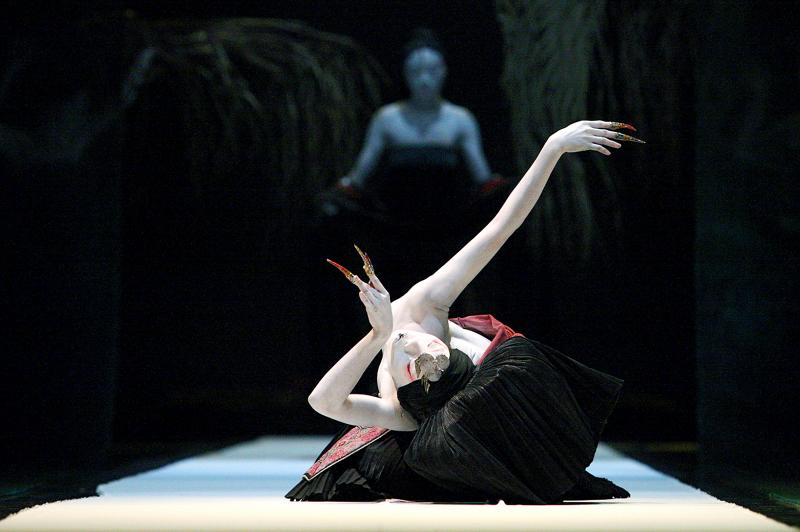
Photo courtesy of Legend Lin Dance Theatre
The troupe approaches every single practice with the same mindset, the same intensity: authenticity — to themselves and their craft.
In 2014, Lin created Intimate Encounters as a companion piece to her renowned work Song of Pensive Beholding (觀), unmasking a process normally hidden backstage: dancers carefully painting, clothing and prepping their bodies for a live performance.
Intimate Encounters is being restaged in the Experimental Theatre this weekend, but tickets have sold out. However, there are still tickets available for Song’s big revival next month.
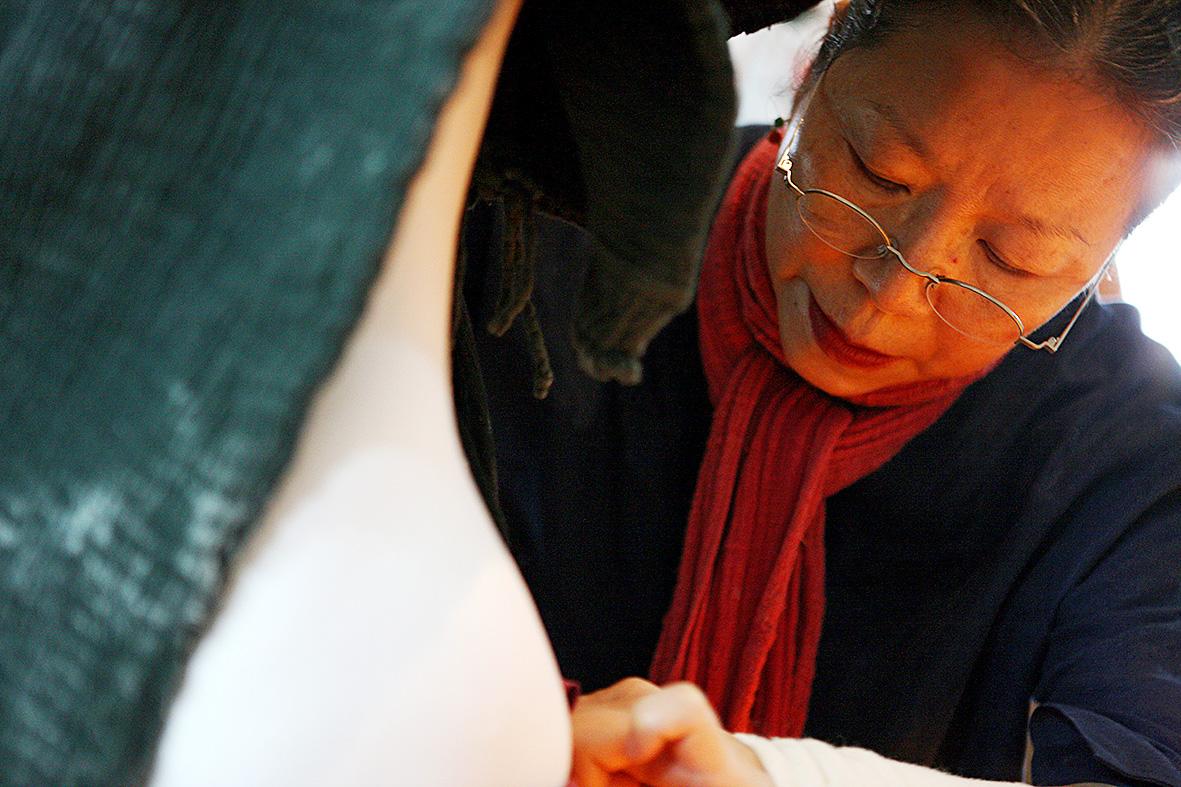
Photo courtesy of Legend Lin Dance Theatre
‘INTIMATE ENCOUNTERS’
Intimate Encounters depicts the ritual aspect of getting into character: slicking back hair, coating the body in oil paint and layering intricate costume pieces, before launching into a warm-up of Legend Lin’s trademark meditative walks.
The intention in this piece is to highlight the meticulousness required from every troupe member involved in a production, providing audiences with a rare glimpse of what goes into making the final product.
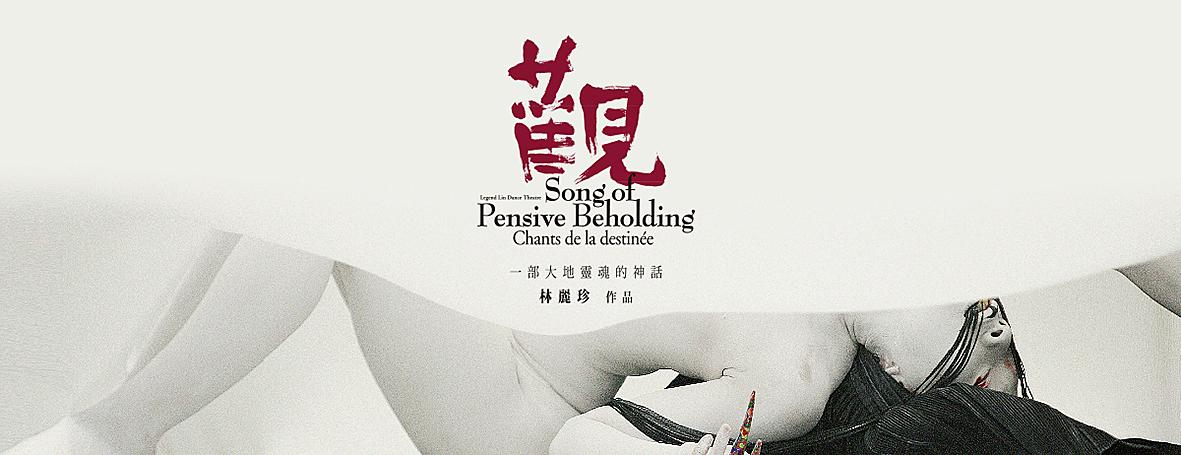
Photo courtesy of Legend Lin Dance Theatre
Lin hand-stitches every piece of clothing, believing machine-sewn lines would show through the fabric. She says that doing so enhances the quality and detail of its appearance. It’s the same with dance.
Intimate Encounter finishes with two dancers, now resplendent in dramatic makeup and costume, walking towards each other as the music swells. It’s a glimpse of Song’s opening tableaux.
‘SONG OF PENSIVE BEHOLDING’
Song of Pensive Beholding, which premiered in 2009, is inspired by Taiwan’s natural environment and has won international acclaim. Song tells of the life and spirit of the land through a mythical tale about an eagle clan.
Lin refuses to discuss the story arc.
“Explaining the plot crushes your imagination and limits you,” she said. “What matters is how the dance touches you and opens your heart, not whether you ‘get it’ or not.”
Although the company has been performing Song for 13 years, Lin says every run-through still feels unique. Each variation in time, space and people creates change, down to the expression of a hand.
REFLECTIONS OF A CHOREOGRAPHER
Most of Lin’s team have been with her for decades, which limits that likelihood that mistakes will be made in front of audiences.
“Anyone who’s been with us for less than 10 years is still considered a newbie,” she quips.
Still, accidents happen. Once, one of her dancers took a step forward only to realize her skirt still standing stiffly behind her. How it happened remains a mystery.
“If it falls, it falls,” Lin shrugged. “As soon as you enter that space, there’s no turning back, just like in life.”
Every tumble, every parting must be accepted, she adds.
“In our job, we have to put aside emotional fluctuations,” she says, “When you’re truly focused, the environment fades away.”
Through absorbing the meticulous movements and interactions, she hopes the audience will emerge into a bigger, calmer world.
“Legend Lin Dance Theatre’s performances are like tea,” Lin says. “They linger with an aftertaste in the mind.”
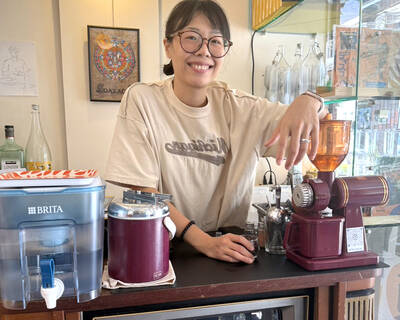
Cheng Ching-hsiang (鄭青祥) turned a small triangle of concrete jammed between two old shops into a cool little bar called 9dimension. In front of the shop, a steampunk-like structure was welded by himself to serve as a booth where he prepares cocktails. “Yancheng used to be just old people,” he says, “but now young people are coming and creating the New Yancheng.” Around the corner, Yu Hsiu-jao (饒毓琇), opened Tiny Cafe. True to its name, it is the size of a cupboard and serves cold-brewed coffee. “Small shops are so special and have personality,” she says, “people come to Yancheng to find such treasures.” She

The low voter turnout for the referendum on Aug. 23 shows that many Taiwanese are apathetic about nuclear energy, but there are long-term energy stakes involved that the public needs to grasp Taiwan faces an energy trilemma: soaring AI-driven demand, pressure to cut carbon and reliance on fragile fuel imports. But the nuclear referendum on Aug. 23 showed how little this registered with voters, many of whom neither see the long game nor grasp the stakes. Volunteer referendum worker Vivian Chen (陳薇安) put it bluntly: “I’ve seen many people asking what they’re voting for when they arrive to vote. They cast their vote without even doing any research.” Imagine Taiwanese voters invited to a poker table. The bet looked simple — yes or no — yet most never showed. More than two-thirds of those
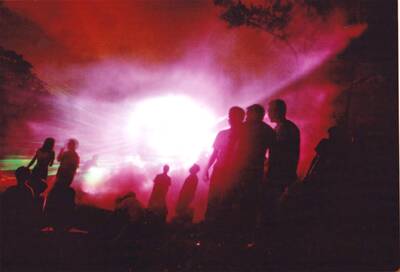
In July of 1995, a group of local DJs began posting an event flyer around Taipei. It was cheaply photocopied and nearly all in English, with a hand-drawn map on the back and, on the front, a big red hand print alongside one prominent line of text, “Finally… THE PARTY.” The map led to a remote floodplain in Taipei County (now New Taipei City) just across the Tamsui River from Taipei. The organizers got permission from no one. They just drove up in a blue Taiwanese pickup truck, set up a generator, two speakers, two turntables and a mixer. They

Former Chinese Nationalist Party (KMT) chairwoman Hung Hsiu-chu’s (洪秀柱) attendance at the Chinese Communist Party’s (CPP) “Chinese People’s War of Resistance Against Japanese Aggression and the World Anti-Fascist War” parade in Beijing is infuriating, embarrassing and insulting to nearly everyone in Taiwan, and Taiwan’s friends and allies. She is also ripping off bandages and pouring salt into old wounds. In the process she managed to tie both the KMT and the Democratic Progressive Party (DPP) into uncomfortable knots. The KMT continues to honor their heroic fighters, who defended China against the invading Japanese Empire, which inflicted unimaginable horrors on the